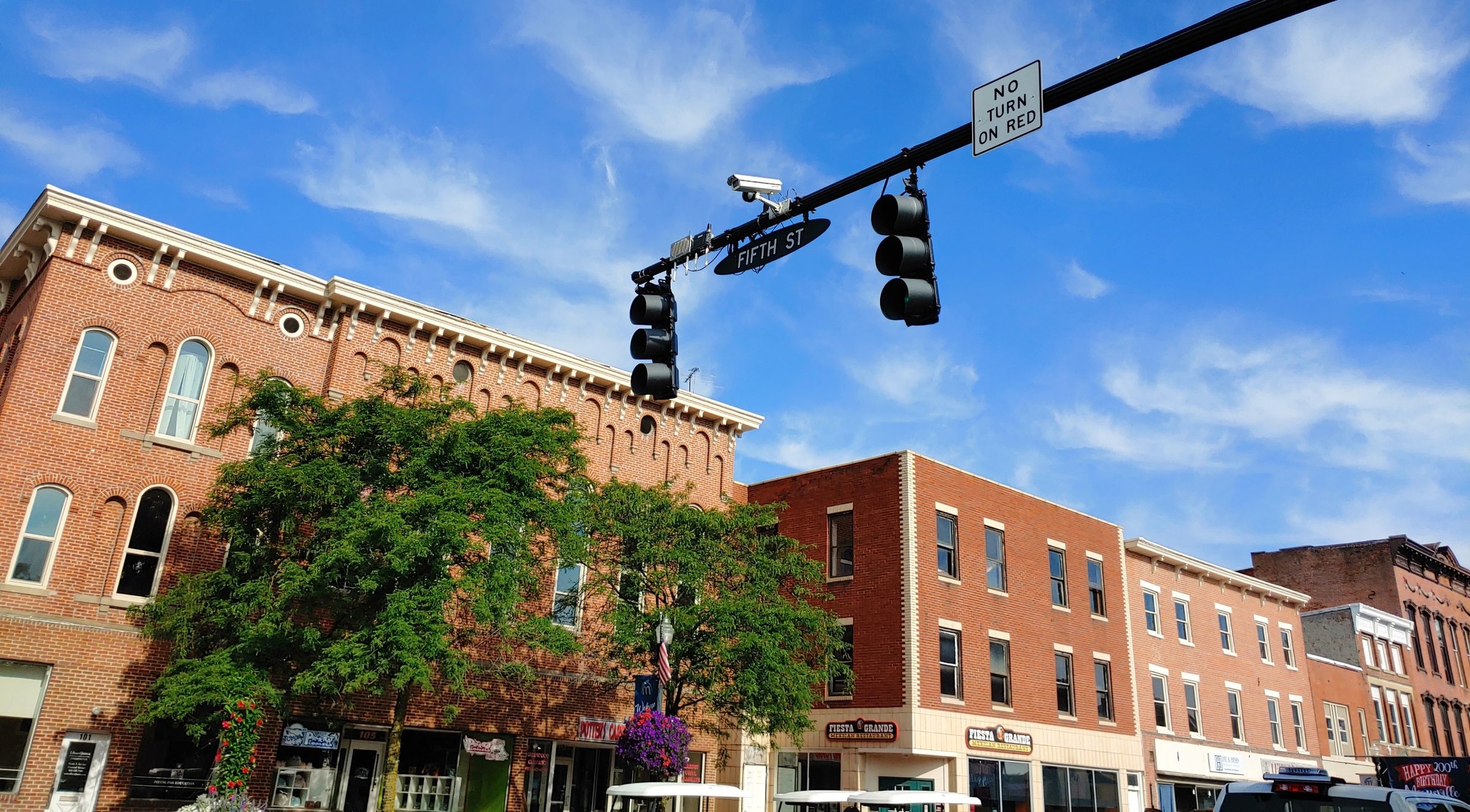
Honda Demonstrates 'Smart' Intersection That Warns Drivers of Jaywalkers, Red Light Runners
By Bruce Edwards
Honda Motor Co. has fitted a downtown Marysville intersection with cameras, computers and artificial intelligence that can warn equipped vehicles of a jaywalker out of sight around a corner or a speeding car about to run a red light.
But engineers could not predict how much time and money it will take before every intersection is similarly "smart" and standard equipment in a vehicle includes phone-sized displays that flash a warning and politely announce, "Pedestrian crossing; check your surroundings."
Honda R&D Americas Inc., the carmaker's research arm, demonstrated the system to Gov. John Kasich and other officials Thursday. There's still a lot of research to be done, and the carmaker has started talks with city officials and the Ohio Department of Transportation on other places to test smart intersections.
"We want to see this widely deployed in Ohio," said Sue Bai, principal engineer with Honda R&D. "We developed the first one to show this is feasible. It's really an infrastructure job. The rest is really up to the government side."
Honda is aiming for no less than collision-free driving, said Ted Klaus, vice president of strategic research for Honda R&D. That encompasses not only autonomous vehicles but technology like this that can augment drivers' decision making, even taking into account non-connected elements in traffic like pedestrians.
Ohio needs to lead the way in autonomous and connected vehicles just as the Wright brothers led in aviation, said Kasich, a Republican winding down his final three months in office. And the state's education system needs to transform, he said, to train students for future careers that look nothing like today's.
"Your kids are going to be safer, you're going to be safer," he said. "There's going to be a whole set of new jobs that are going to be exciting, and pay better. Our state anticipates that. We're risk-takers here."
Honda has been working 10 years on automation and connected vehicles, said Jim Keller, chief engineer on the project. Engineers conceived the smart intersection a year ago and began assembling the technology and software in February.
"This turned out to be more challenging than anticipated, but that's good because it shows we're learning and improving," Bai said. "If it were easy, someone else would have done it. There's lots of unexpected (use) cases, great lessons to learn to build a more robust system."
The project is part of the part of the Rt. 33 Smart Mobility Corridor project, a $15 million public-private research initiative to test connected and autonomous vehicles interact along the 35-mile stretch from Marysville to Dublin.
Klaus was hesitant to list the price tag for the first smart intersection installation, saying with additional testing the specifications and equipment may change. The cameras and transmitters need to be tested in other settings as well.
Honda chose the intersection of Main and 5th streets about a block from the courthouse because storefronts come right up to the sidewalk on all four corners. There are 27 similar intersections in Marysville, Keller said.
There are a host of other issues to work out: Determining federal and state policy around the technology, whether to stick with transmitted radio waves or switch to cellular signals, who pays for the infrastructure. The various automakers would need to agree on standards for consistent communications protocol so transmitters don't care what type of connected vehicle is approaching.
"There's a lot of gears that have to come together," Keller said. "We're taking these steps so we're ready ... when everything aligns.

